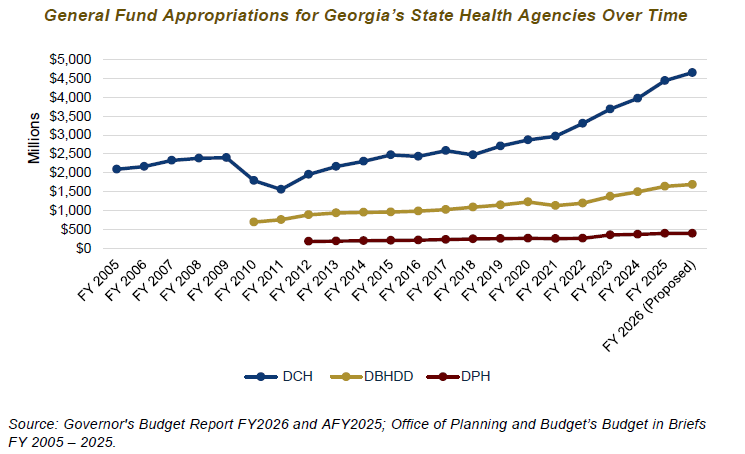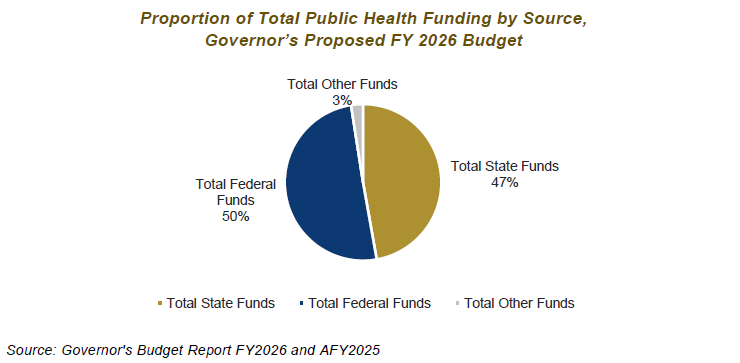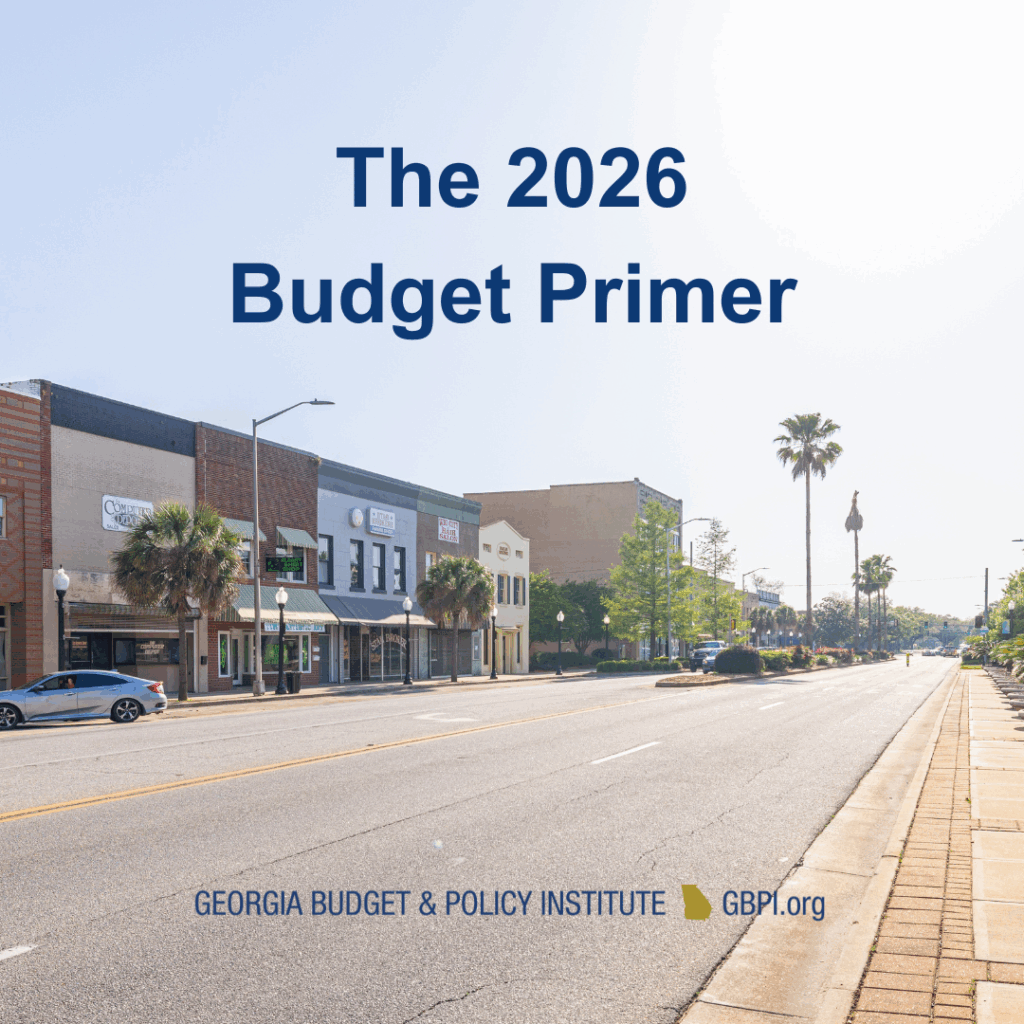Introduction
The Department of Public Health programs focus on health promotion and health-related disaster response and preparedness as well as disease and injury prevention. Governor Kemp’s budget proposal for Fiscal Year (FY) 2026 provides the Department with about $436 million in state funds. That includes $403 million in state general funds and about $13.9 million in tobacco settlement funds as well as about $18 million in combined Brain & Spinal Injury Trust Funds and Trauma Care Trust Funds for the attached agencies. Governor Kemp’s budget proposal increases the Department’s state funding by $3.8 million, or less than 1%, above the FY 2025 budget. Much of this increase is accounted for by the expansion of the maternal home-visiting pilot project.
As in previous years, the Governor’s proposed budget would allocate far fewer state general funds to public health compared to health care. The Department of Public Health’s budget has remained comparatively low since becoming its own state health agency in 2011. Proportionally, if the state had $10 dollars to spend on its three primary health agencies in FY 2026, the Governor’s FY 2026 proposed budget allocates $7 to the Department of Community Health (DCH), $2 to the Department of Behavioral Health and Developmental Disabilities (DBHDD) and less than $1 to the Department of Public Health (DPH). Georgia’s investment in health is oriented downstream toward catching Georgians when they are already sick or in crisis. Moving upstream and increasing the state investments in public health could help keep communities healthy and address preventable health outcomes and conditions.[1]

Budget Highlights
Amended Fiscal Year 2025 Budget
- $437,000 increase to mail Low THC Oil Patient registry cards pursuant to SB 495 (2024 Session)
- $270,000 increase to study the impact of social media on mental health for children in Georgia
Fiscal Year 2026 Budget
- $2.98 million increase to expand the maternal home visiting pilot project in rural Georgia to a total of 75 counties
- $778,239 increase to expand access to maternal fetal medicine by supporting a cardiac obstetric program
- $437,000 increase to mail Low THC Oil Patient registry cards pursuant to SB 495 (2024 Session)
Proposed Federal Budget Cuts Would Create Public Health Funding Shortfall
Of the Governor’s $923 million total proposed budget for Department of Public Health in FY 2026, about half is derived from federal sources. That includes funding from the U.S. Department of Health and Human Services, such as the Maternal and Child Health Services Block Grant, the Temporary Assistance for Needy Families Block Grant and the Preventive Health and Services Block Grant. However, the largest source of that federal funding comes from the U.S. Department of Agriculture and is earmarked for the Special Supplemental Nutrition Program for Women, Infants, and Children (WIC), which provides over 200,000 low-income Georgians with healthy food, nutrition information, breastfeeding support and other services.

Recent federal appropriations proposals would have significantly decreased or eliminated crucial federal funding for key services and programs, such as HIV prevention and treatment, family planning, suicide prevention and perinatal home visiting.[2] Ultimately, these proposals were not included in the continuing resolution that funds the federal government through March 2025.[3] However, re-introducing these cuts for federal public health agencies into FY 2026 federal appropriations bills could create a significant funding shortfall for the state Department of Public Health and threaten the agency’s ability to undertake basic functions that benefit all Georgians.
Endnotes
[1] Chan, L. (2024, December 20). Public health for all y’all: How a thriving, fully funded public health system can support a stronger, healthier Georgia. Georgia Budget & Policy Institute. https://gbpi.org/public-health-for-all-yall-how-a-thriving-fully-funded-public-health-system-can-support-a-stronger-healthier-georgia/
[2] Van de Vate, V., Soule, L., & Curington, M. (2024, July 12). House appropriations committee passes FY25 Labor-HHS bill. National Association of City and County Health Officials. https://www.naccho.org/blog/articles/house-appropriations-committee-passes-fy25-labor-hhs-bill
[3] Association of State and Territorial Health Officials. (2024, December 20). December: Federal funding update. https://www.astho.org/advocacy/federal-government-affairs/leg-alerts/2024/december-2024-federal-funding-update/









